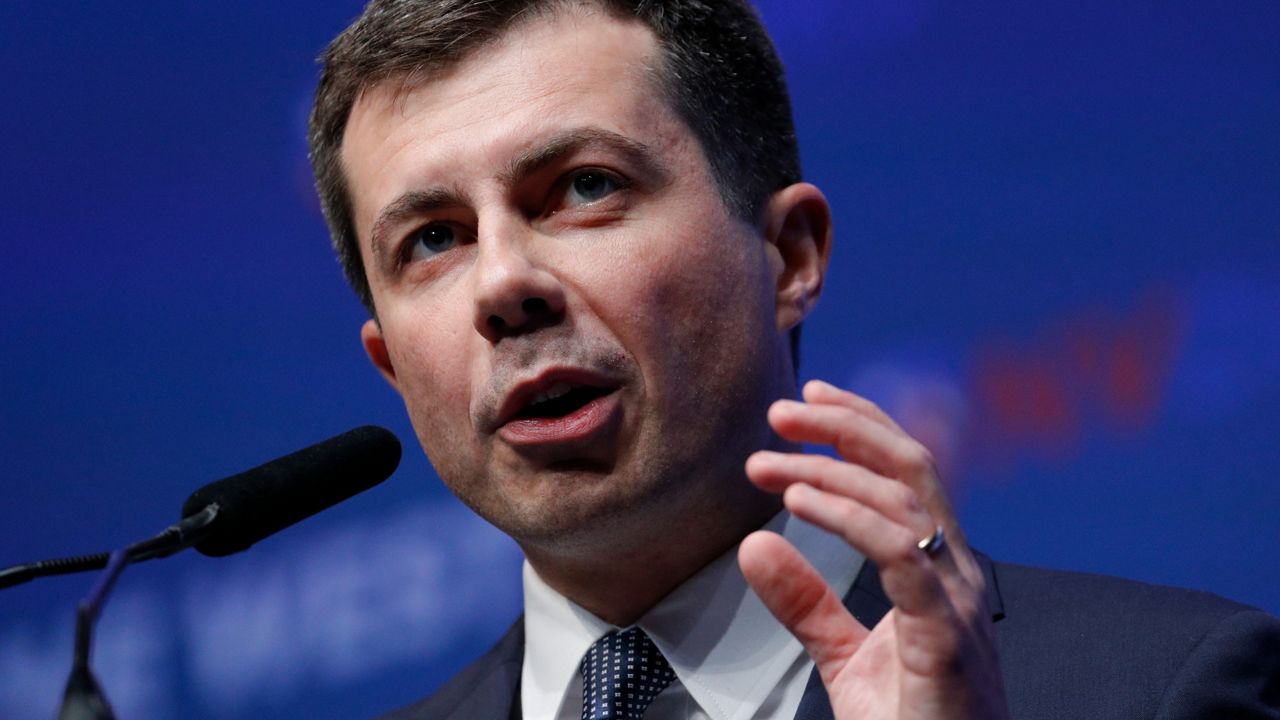AUSTIN, Texas — President Joe Biden, in November 2021, signed an infrastructure deal worth more than $1 trillion into law, and about half of that is earmarked for projects related to transportation.
Where will that money go and what will be taken into consideration in its application? That was largely the focus of Secretary of Transportation Pete Buttigieg’s South by Southwest 2022 festival address Wednesday in Austin, Texas.
Prior to his town hall event, Buttigieg, the 19th transportation secretary and former mayor of South Bend, Ind., met with Austin Mayor Steve Adler. Buttigieg lauded Austin for the passage of Project Connect, the transit expansion project created by the Capital Metropolitan Transportation Authority that could cost upwards of $7.1 billion.
“There’s a vision for expansion that will bring many more people into the kinds of connections that are needed: to have access to opportunity, to have access to education, to have access to other people,” Buttigieg said. “That only comes when you have a way to get from Point A to Point B, and through great public transit creating alternatives for people in communities that were once envisioned as basically having two levels of citizenship: one if you had the advantage of your own car, and then a different one for everyone else.”
In breaking down his vision for the future of transportation infrastructure in the U.S., Buttigieg provided five pillars that will guide spending and warned that the process will not happen overnight. The money is intended, he said, to create long-lasting infrastructure, something he referred to as “building cathedrals.”
The following are highlights from the address portion of Buttigieg’s town hall event. They have been edited for clarity and brevity.
Safety
It’s not the sexiest, but it’s actually the foundation of everything else. Safety is supposed to be the kind of thing you take for granted. You would be distracted right now if you were worried this was a safe place to be in the event of a fire. There have been amazing strides in transportation safety on things like aviation. It’s not unusual to have a year where there are zero deaths in commercial aviation. [But], on the roadways, you basically take it as a given, as is normal, that thousands and thousands of people will die every year. So that’s part of what we’re putting this money toward: making it safer for you to get to where you need to be.
Economic Development
There’s a reason that this bill was called the Infrastructure Investment and Jobs Act. The president is very focused on making sure the U.S. is positioned to win the century, to compete with any other country, notably China making enormous investments in their transportation infrastructure. We sort of skipped about 40 years of investing at the rate we really should have to have the kind of infrastructure that will back our economic growth.
Climate
Every transportation decision is a climate decision, whether we recognize it or not. As a matter of fact, in the U.S. economy, the biggest sector in terms of contributions to greenhouse gas emissions is the transportation sector. Which means that in my view that’s a challenge for us in transportation to try to be the biggest part of the solution. Not only do we have to cut emissions from transportation on our roads with electric vehicles, in every means of getting around so that you don’t have to drag two tons of metal around with you so you can get to where you need to go, but also we’ve got to prepare for the climate impacts that are already happening. In the Pacific Northwest, there were those heat waves last year. I don’t need to tell Texas about climate change. A year ago, people were melting snowballs in their toilets in order to be able to flush them – in Texas – because Texas froze over. It should not get that cold in Texas. It should not get that hot in Oregon.
Equity
So many communities around the United States can tell stories about how an infrastructure decision that may have been made in the ’50s or ‘60s has chewed up a minority neighborhood, divided a white neighborhood from a Black neighborhood. The very phrase "wrong side of the tracks" is in our vocabulary in American English for a reason. Infrastructure can and should connect, but sometimes it divides. We have a responsibility to make sure that doesn’t happen this time, and to make sure that the jobs that are going to be created are available to everybody, including in fields that have traditionally been very male or very white.
Transformation
I will say that I think the 2020s will probably be one of the most transformative periods we’ve ever seen in transportation. You look at what’s happening with electric vehicles; you look at what’s happening with automated vehicles… we have an opportunity to prepare to make sure the development of these innovations benefits us in terms of public policy, benefits us more equitably and makes us more climate-ready and resilient. And a lot of that depends on the choices that we make with this investment.
The Big Picture
This is going to take a while. I will say you’re going to see more construction starting to happen as early as this summer, but this is not like the economic stimulus of 2009, where the deal was to get as much money pumped into our economy as possible to stimulate demand. This is not about short-term stimulus. It’s about getting ready for the long term. We are building cathedrals, and some of what we do will play out across this decade.



